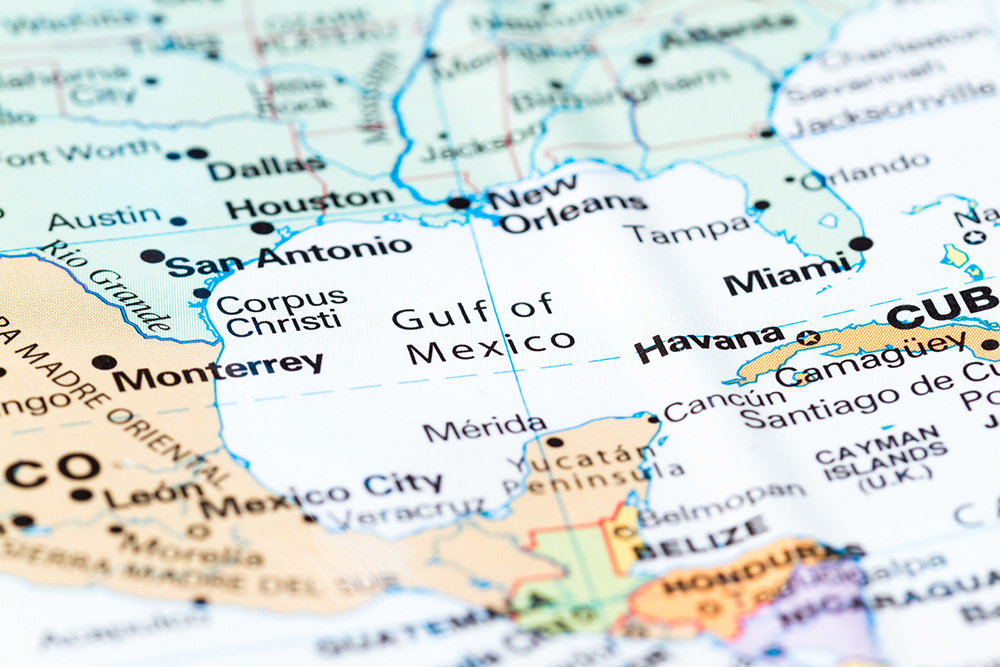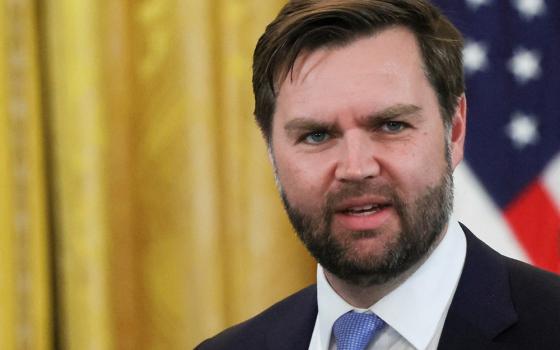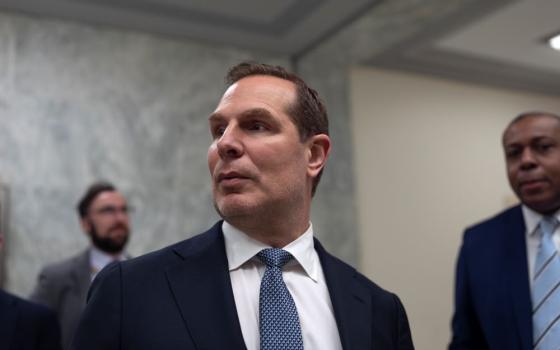
(Dreamstime/Wollertz)
At National Catholic Reporter, for as long as anyone can remember, we have followed the AP stylebook.
Until recently, that was an uncontroversial policy.
Today, the Associated Press' influential stylebook has become a flash point in the culture wars of President Donald Trump's dystopian America because the bully-in-chief has made a federal issue out of it.
The dispute arises from Trump's gimmicky cartographic executive order to rename the body of water shared by the United States and Mexico as the Gulf of America. It is an absurdist America-first distraction — to wipe out a name that has existed on maps longer than the United States has been a nation.
The AP in its stylebook notice said: "The Gulf of Mexico has carried that name for more than 400 years. The Associated Press will refer to it by its original name while acknowledging the new name Trump has chosen. As a global news agency that disseminates news around the world, the AP must ensure that place names and geography are easily recognizable to all audiences."
In response, on Feb. 11, White House Press Secretary Karoline Leavitt informed an AP reporter "that AP's access to the Oval Office would be restricted if AP did not immediately align its editorial standards with President Trump's executive order," according to AP Executive Editor Julie Pace.
Then, on Feb. 14 — Happy Valentine's Day — the White House barred a credentialed AP reporter and photographer from boarding Air Force One for a weekend trip with Trump. AP reported that the administration also has blocked the AP from covering a handful of events at the White House, including the visit of India's leader.
These violations of press freedoms are disgraceful and based on a laughable absurdity. If a president signed an executive order saying the sky was henceforth to be described as Pepto Bismal pink, rather than blue, that does not necessarily make it so, and the First Amendment prohibits presidents from mandating that news organizations report it as such.
AP's judgment has been measured. Trump also signed an executive order to revert the name of North America's tallest peak, Denali in Alaska, to Mount McKinley. AP said, "The area lies solely in the United States and as president, Trump has the authority to change federal geographical names within the country."
It is hard to understate the importance of a stylebook. It is a writing guide upon which all writers must abide. Calling something the bible of something is a cliche, but for writers and copy editors, the stylebook is their bible.
Advertisement
When I was a student at the University of Missouri School of Journalism, we were drilled with the stylebook by professors like a Marine drill sergeant at Perris Island, South Carolina. On tests, as I recall, one mistake warranted an A-, two mistakes a B, three mistakes a B-, and so forth.
The AP stylebook is the gold standard. AP carefully considers any change. Yet, until now, the most controversial matter might have been on something as arcane as the Oxford comma.
Leavitt, raised Catholic and a product of Catholic schools, was a softball standout at St. Anselm College, the Benedictine university. Surely as a communications major she learned about the First Amendment, or heard about it when she interned at Fox News or when she unsuccessfully ran for Congress. I pray that even the youngest press secretary in history appreciates the importance of press freedom.
"Nobody has the right to go into the Oval Office and ask the president of the United States questions," Leavitt lectured the press. "We reserve the right to decide who gets to go into the Oval Office."
Well, yes, but. My friend Erik Wemple, the respected, fair-minded media columnist at The Washington Post, put it rather succinctly: "All true, with an important caveat. The White House violates the First Amendment if it retaliates against media outlets because it doesn't like their reporting, opinions, etc. — a no-no known in the legal field as viewpoint discrimination."
Or as AP spokesperson Lauren Easton said on Feb. 18, "This is about the government telling the public and press what words to use and retaliating if they do not follow government orders. The White House has restricted AP’s coverage of presidential events because of how we refer to a location."
That's why the Reporters Committee for Freedom of the Press stood up to object. I serve on the steering committee of the Reporters Committee, and I thanked our executive director for the statement and urged him to do more. I don't know — and I won't ask for this column — but I expect that the committee's lawyers are hard at work, rallying support and offering impeccable legal advice. They're the best.
(UPDATE: The Reporter's Committee sent a letter to the White House and the AP sued three Trump administration officials on Feb. 21 over access to presidential events, citing freedom of speech.)
Here's an irony. This important value — freedom of access by the press to government officials, from the president on down — applies to the AP and all journalists, including Fox News, which helped return Trump to the White House.
The Reporters Committee noted that, in 2009, the Washington press corp rallied around Fox News when the White House under President Barack Obama tried to exclude Fox from the press pool interviewing the official running the executive compensation for the Troubled Asset Relief Program at the U.S. Treasury Department.
After the AP outrage, Reporters Committee Executive Director Bruce Brown said: "Should another journalist or news organization be singled out, the press pool should stand in solidarity much like it did on Fox's behalf in 2009 and show that it will stick together on something so basic as protecting access to official events."
In the meantime, NCR will continue to follow AP style.
This article has been updated.





